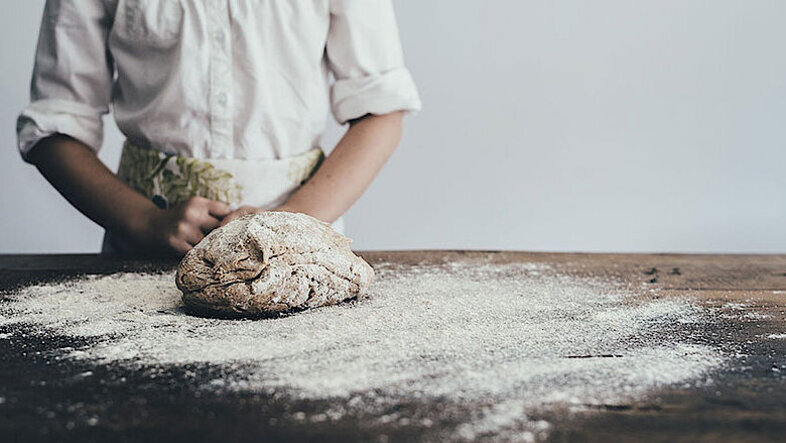Foam without plastic
Polymer foams, commonly known as foam, have become an almost indispensable part of our daily life. The typical sponge for doing the dishes is probably the first thing that comes to mind. However, the major portion of plastic foam can be found in industry, such as in ski and snowboard production or the construction industry, where foam is used as insulation material in the form of expanded polystyrene foam. All these foams, ranging from soft to hard foams, are currently exclusively made from synthetic materials, i.e. plastic. The EU Horizon 2020 project BreadCell aims to find an environmentally friendly alternative.
Bread baking as a model
In the next five years, an international team of researchers from Austria, Sweden and Spain develop polymer foams made from cellulose, which can be produced using an organic gas generation method. "In our case, organic foaming means that we use yeast", says material chemist Alexander Bismarck, who represents the University of Vienna in the project: "We use a process from one of the oldest cultural techniques – bread baking. The principle is very similar: Yeast produces CO2, which in turn ferments the sugar in the dough, causing it to foam. In our case, the dough is cellulose."
The challenges of foaming
"Our problem was that while common cellulose is a polymeric sugar, it is unfortunately not affected by yeast. We eventually found out that we could degrade so-called hemicellulose, which is better degradable than common cellulose. However, to do so, we first had to culture a special type of yeast", Bismarck explains. "The used yeast produces carbon dioxide, which then starts to foam, creating a suspension of cellulose fibres." According to the researchers, the resulting cellulose foam could potentially replace foam made of synthetic material.
There is still a long way to go. Another challenge that the researchers are working on in the scope of this EU project are the concerns regarding material quality. Any material needs to have certain characteristics to fulfil specific purposes and the intended function. "We want to be able to produce cellulose foam that has a certain width, while having as little weight per volume as possible. At the same time, the material still needs to have mechanical properties, such as a certain level of stability", the materials chemist explains.
Applied basic research project
At the end of the project period (2025), the researchers want to be able to present a prototype material that fulfils the desired requirements regarding density and functionality. This is when the industrial partner in the project comes into play who wants to test the renewable polymer foam made from cellulose in so-called sandwich composites. "The material certainly is an interesting option to use in environmentally friendly packaging material, such as coffee capsules. If they were made from cellulose, you could dispose of the used capsules directly in the compost or organic waste bin."
What makes the BreadCell project special is that, on the one hand, the developed polymer foam can be used in a wide range of areas and it is biodegradable. On the other hand, due to the use of yeast, the foaming process itself is organic.
"Without polymers we would have a huge problem"
The development of renewable, environmentally friendly materials is very important to Alexander Bismarck: however, he also points out that while in the long run, it will be possible to replace many synthetic materials, we will not be able to replace all of them: "Synthetic materials, i.e. polymers, were invented and developed in particular because they are persistent. Without polymers we would not be able to use any kind of wiring and electrical devices." Alexander Bismarck argues that we need a change in consumer behaviour: "The question is: Do we really have to pack every item individually?" As long as we answer this question with ‘yes’, the use of degradable starting materials produced in an environmentally friendly way can contribute to solving the CO2 and waste problems.
EU Horizon 2020 project BreadCell
The EU Horizon 2020 project "BreadCell – Upgrading of Cellulose Fibers into Porous Materials" was launched in April 2021 and will run until March 2025. The project partners are the Chalmers University of Technology (Sweden), the Graz University of Technology, the University of Vienna including Alexander Bismarck, Fundación Tecnalia Research & Innovation (Spain) as well as the BioNanoNet research organisation (Austria).
